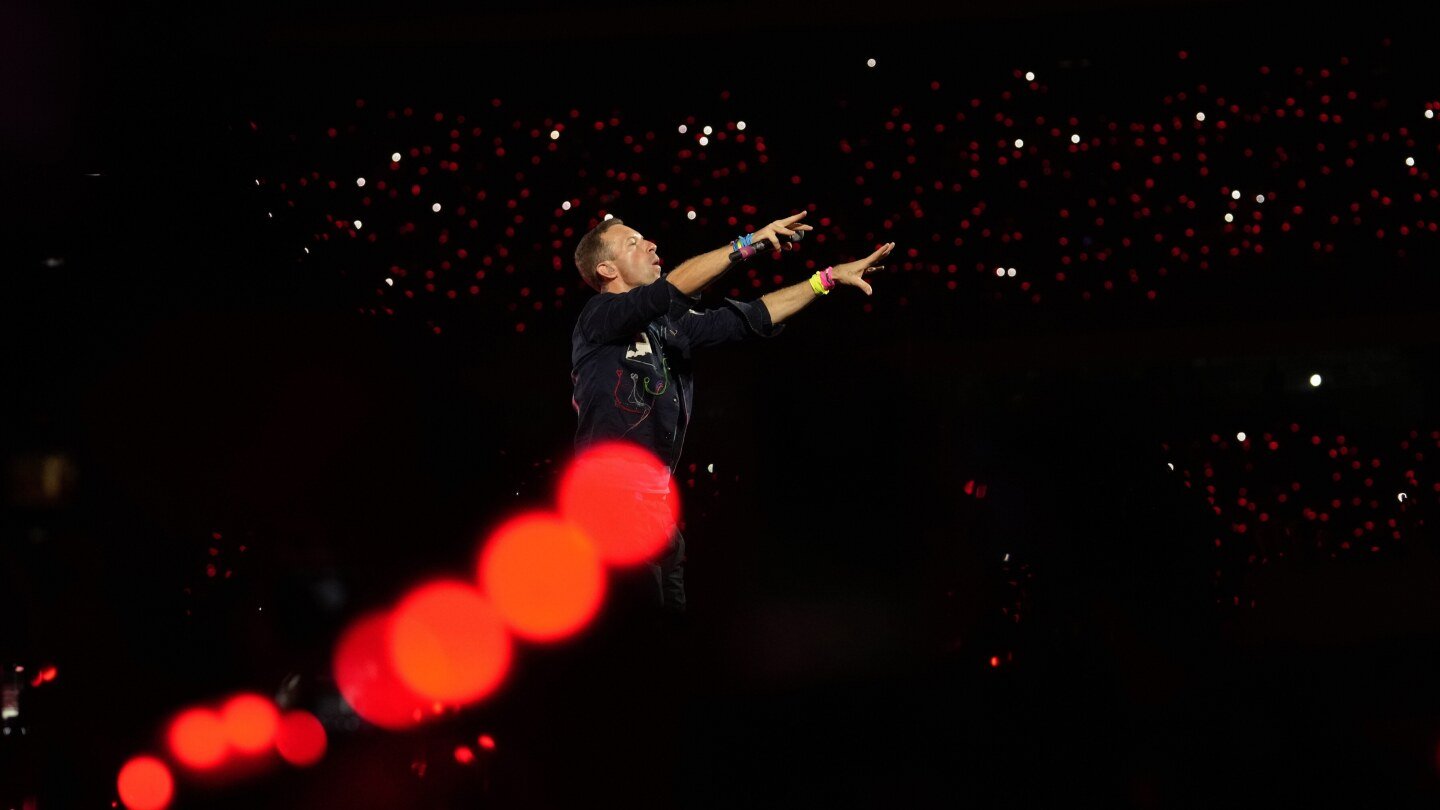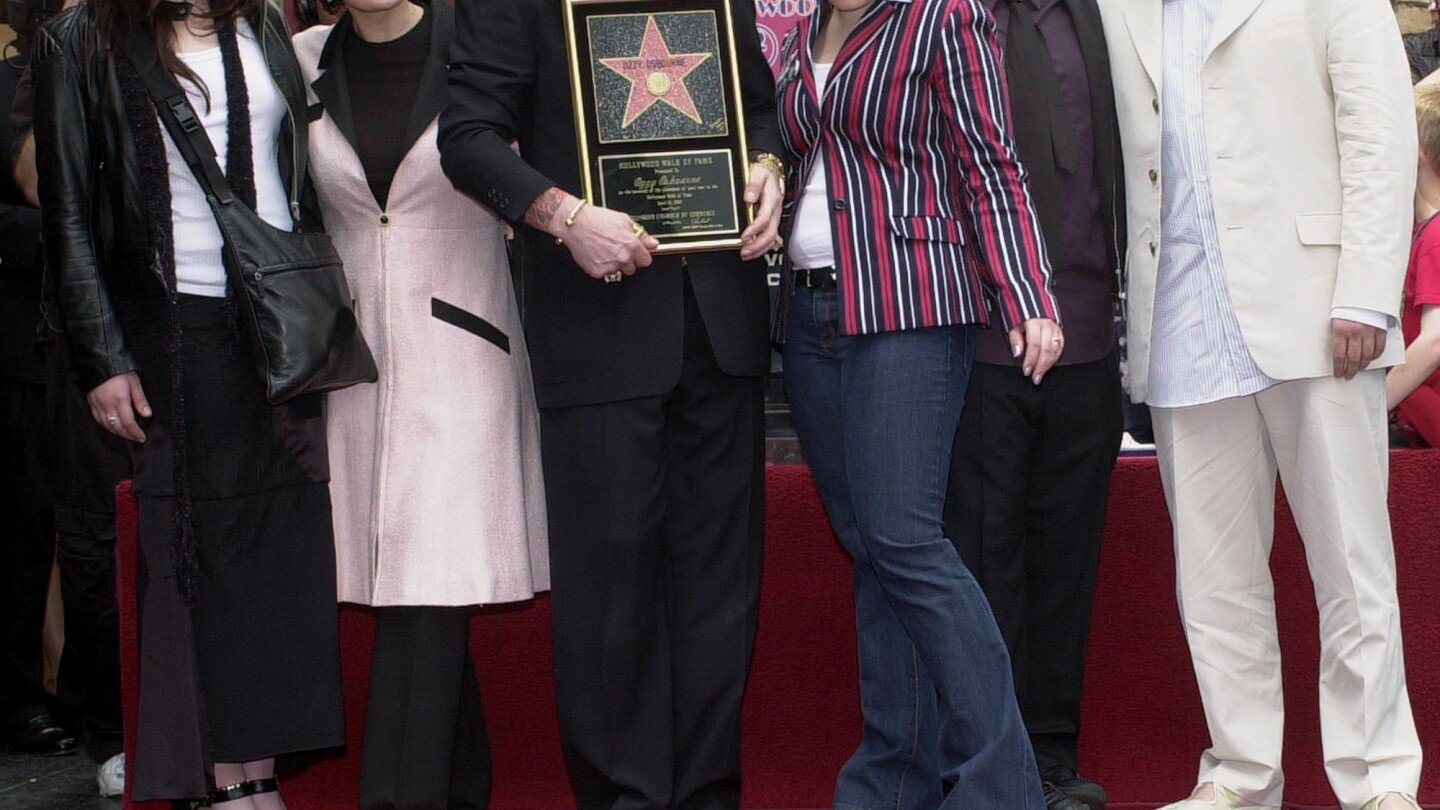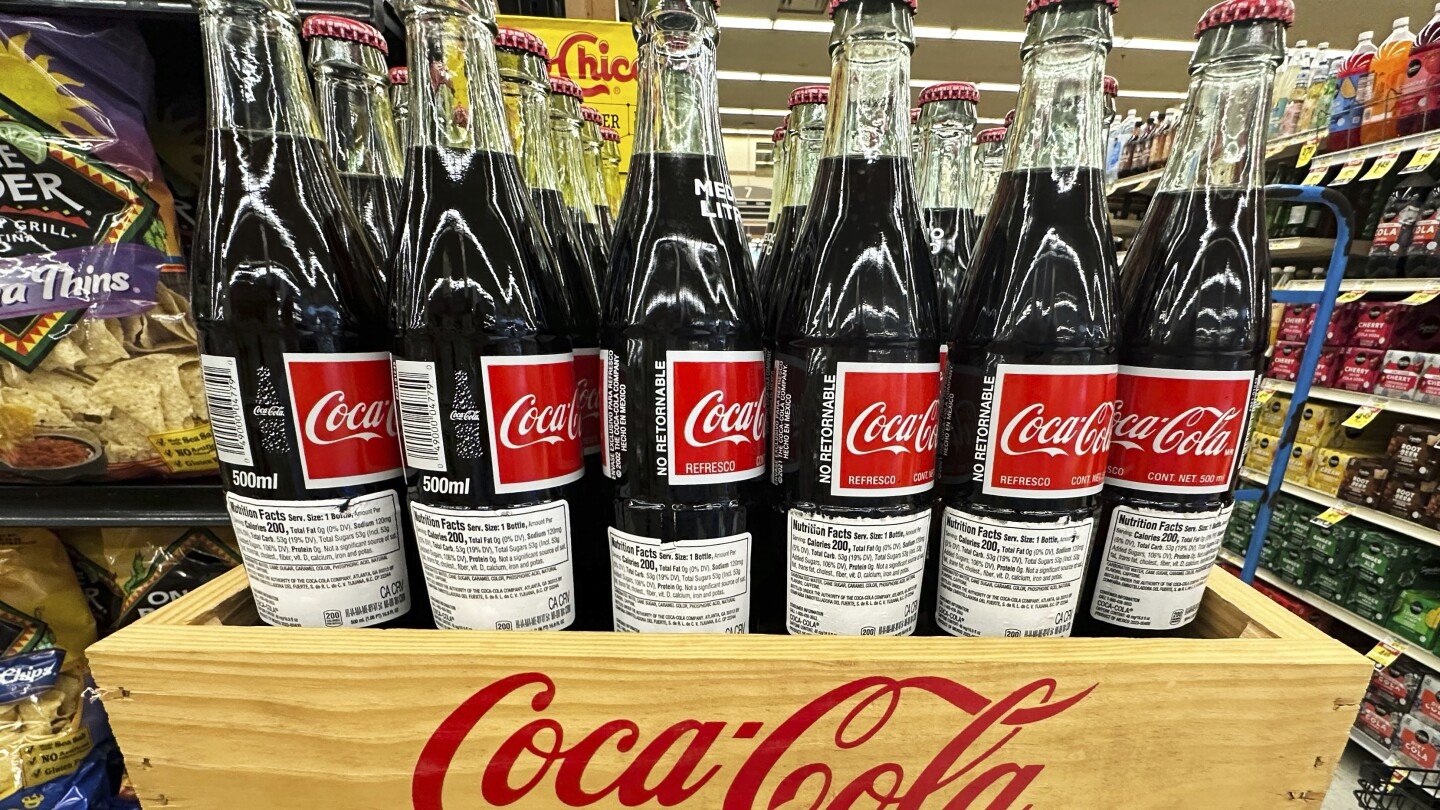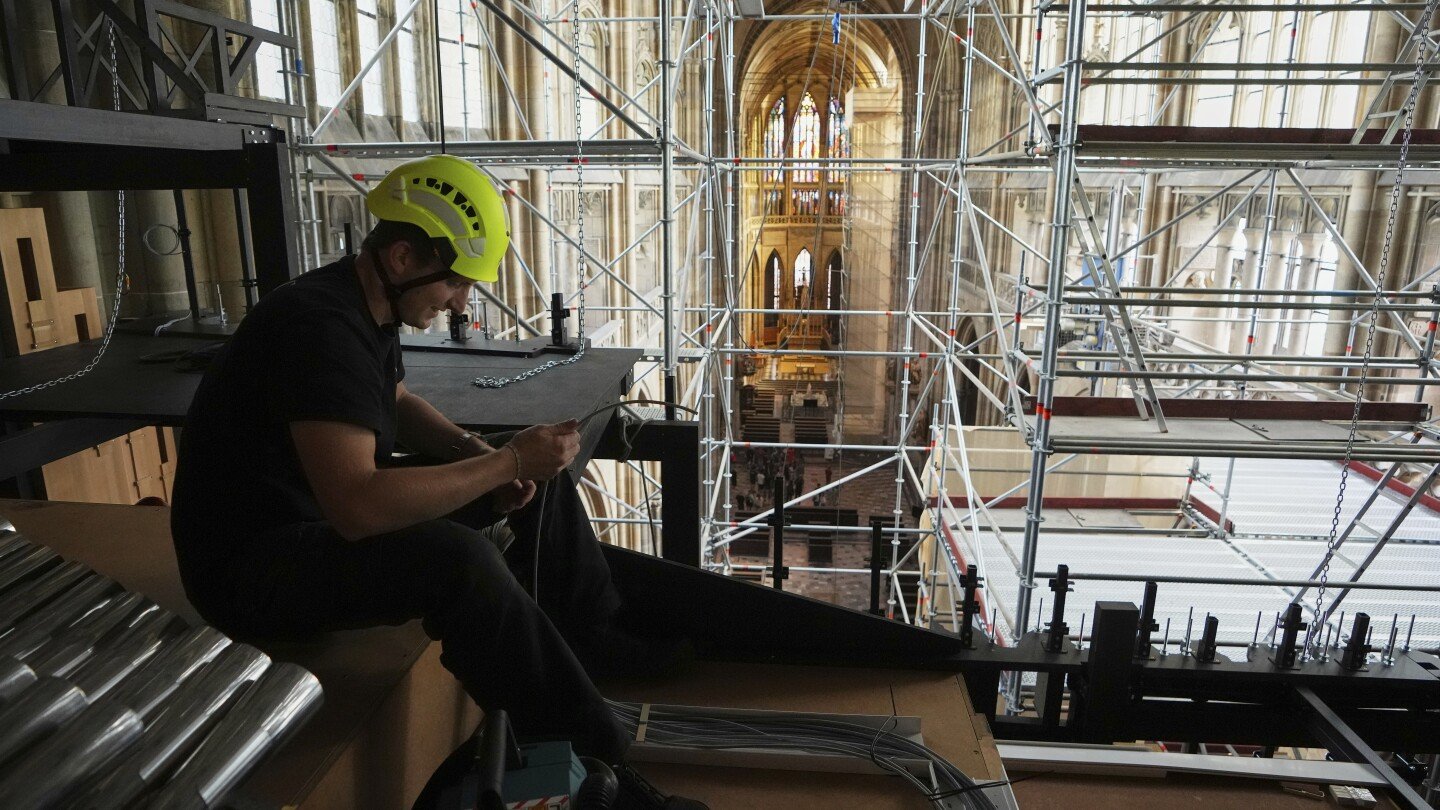Lifestyle
What to know about the CEO caught embracing an employee at a Coldplay concert

LONDON (AP) — A routine moment of crowdwork at a Coldplay concert went viral last week when a couple tried to avoid the spotlight after they were caught hugging on the jumbotron. Internet sleuths quickly figured out that they were the CEO and chief people officer of a little-known tech company called Astronomer.
The snippet of video set the internet alight, fueling a wave of memes and drawing attention to the erosion of privacy in public spaces.
Here are some things to know:
What happened at the concert
During the concert on Wednesday at Gillette Stadium in Foxborough, Massachusetts, lead singer Chris Martin asked the cameras to scan the crowd for his “Jumbotron Song,” when he sings a few lines about the people the camera lands on.
A man wearing a birthday sash was up first. Two people in banana costumes were highlighted.
But in between, something unexpected happened. For several seconds, a couple was shown on the big screen. They were cuddling and smiling, his arms wrapped around her, as she leaned back into him.
When they saw themselves on the big screen, her jaw dropped, her hands flew to her face and she spun away from the camera. He ducked out of the frame, as did she.
“Either they’re having an affair or they’re just very shy,” Martin joked.
It didn’t end there.
Who was involved
After the video went viral, the internet got to work.
Online sleuths rapidly figured out that the man was Andy Byron, chief executive officer, while she was Kristin Cabot, the chief people officer — in other words, the head of human resources.
Astronomer, based in New York, provides big companies with a platform that helps them organize their data.
The company at first said little about the incident. In response to an initial inquiry from The Associated Press, Astronomer’s spokesman said only that a statement attributed to Byron that circulated online immediately after the incident was a “fake from a clearly labeled parody account.”
The company later confirmed the identities of the couple in a statement to AP.
What happened to the CEO
In the hours after the video went viral, Byron’s name was at one point the most searched term on Google.
Astronomer eventually addressed the situation, announcing in a LinkedIn post late Friday that Byron had been placed on leave and that the board of directors had launched a formal investigation.
The company said a day later that Byron had resigned, and that its cofounder and chief product officer, Pete DeJoy, was tapped as interim CEO while it searches for Byron’s successor.
“Astronomer is committed to the values and culture that have guided us since our founding. Our leaders are expected to set the standard in both conduct and accountability, and recently, that standard was not met,” the company said in its post on LinkedIn.
DeJoy weighed in on Monday how the company was thrust into the spotlight.
“The events of the past few days have received a level of media attention that few companies—let alone startups in our small corner of the data and AI world — ever encounter,” he wrote on Linkedin. “The spotlight has been unusual and surreal for our team and, while I would never have wished for it to happen like this, Astronomer is now a household name.
Why you should read those warnings about being filmed
It’s easy to miss, but most concert venues have signs informing the audience that they could be filmed during the event. Look for them on the walls when you arrive and around the bar areas or toilets. It’s common practice especially when bands like to use performances for music videos or concert films.
The venue in this case, Gillette Stadium in Foxborough, also has a privacy policy online which states: “When you visit our location or attend or participate in an event at our location, we may capture your image, voice and/or likeness, including through the use of CCTV cameras and/or when we film or photograph you in a public location.”
What it says about privacy
In the internet age, such videos — or ones taken on someone’s smartphone — can quickly zip around the world.
This video rocketed around social media, as people speculated about why the couple dodged the camera.
Empathy for the pair and their families was mixed with plenty of snarky commentary and countless memes, with the fake statement from the chief executive generating a lot of additional vitriol. And news reports said that Byron’s LinkedIn account was disabled after it was flooded by a wave of comments.
“It’s a little bit unsettling how easily we can be identified with biometrics, how our faces are online, how social media can track us — and how the internet has gone from being a place of interaction, to a gigantic surveillance system,” said Mary Angela Bock, an associate professor in the University of Texas at Austin’s School of Journalism and Media. “We are being surveilled by our social media. They’re tracking us in exchange for entertaining us.”
_____
AP Business Writer Wyatte Grantham-Philips contributed to this report from New York.
Lifestyle
Ozzy Osbourne: How he became a cuddly family figure on ‘The Osbournes’

LOS ANGELES (AP) — There was Ozzy before “The Osbournes” and Ozzy after “The Osbournes.”
For much of his life, the Black Sabbath founder and legendary heavy metal frontman who died at 76 on Tuesday was known to much of the public as a dark purveyor of deeds ranging from decadent to downright Satanic.
Wild stories followed him. Clergy condemned him. Parents sued him.
But with the debut of his family reality show on MTV, the world learned what those who’d been paying closer attention already knew: Ozzy Osbourne was soft and fuzzy under the darkness.
During its relatively short run from 2002 to 2005, “The Osbournes” became a runaway hit and made stars of his wife Sharon and kids Jack and Kelly. But more than that, it made a star of the domesticated version of Ozzy Osbourne, and in the process changed reality TV.
In 2025, when virtually every variety of celebrity has had a reality show, it’s hard to see what a novelty the series was. MTV sold it as television’s first “reality sitcom.”
“Just the idea of the Black Sabbath founder, who will forever be known for biting the head off a bat during a 1982 concert, as a family man seems strange,” Associated Press Media Writer David Bauder wrote on the eve of “The Osbournes” premiere. But on the show, Osbourne was “sweetly funny — and under everything a lot like the put-upon dads you’ve been seeing in television sitcoms for generations.”
Danny Deraney, a publicist who worked with Osbourne and was a lifelong fan, said of the show, “You saw some guy who was curious. You saw some guy who was being funny. You just saw pretty much the real thing.”
“He’s not the guy that everyone associates with the ‘Prince of Darkness’ and all this craziness,” Deraney said. “And people loved him. He became so affable to so many people because of that show. As metal fans, we knew it. We knew that’s who he was. But now everyone knew.”
Reality shows at the time, especially the popular competition shows like “Survivor,” thrived on heightened circumstances. For “The Osbournes,” no stakes were too low.
They sat on the couch. They ate dinner. The now-sober Ozzy sipped Diet Cokes, and urged his kids not to indulge in alcohol or drugs when they went out. He struggled to find the History Channel on his satellite TV. They feuded with the neighbors because, of all things, their loud music was driving the Osbournes crazy.
“You were seeing this really fascinating, appealing, bizarre tension between the public persona of a celebrity and their mundane experiences at home,” said Kathryn VanArendonk, a critic for Vulture and New York Magazine.
The sitcom tone was apparent from its first moments.
“You turn on this show and you get this like little jazzy cover theme song of the song ‘Crazy Train,’ and there’s all these bright colors and fancy editing, and we just got to see this like totally 180-degree different side of Ozzy which was just surprising and incredible to watch,” said Nick Caruso, staff editor at TVLine.
Like family sitcoms, the affection its leads clearly had for each other was essential to its appeal.
“For some reason, we kind of just fell in love with them the same way that we grew to love Ozzy and Sharon as like a marital unit,” Caruso said.
What was maybe strangest about the show was how not-strange it felt. The two Ozzies seemed seamless rather than contradictory.
“You’re realizing that these things are personas and that all personas are these like elaborate complex mosaics of like who a person is,” VanArendonk said.
“The Osbournes” had both an immediate and a long-term affect on the genre.
Both Caruso and VanArendonk said shows like “Newlyweds: Nick and Jessica,” which followed then-pop stars Jessica Simpson and Nick Lachey after they married, was clearly a descendant.
And countless other shows felt its influence, from “The Kardashians” to “The Baldwins” — the recently debuted reality series on Alec Baldwin, his wife Hilaria and their seven kids.
“‘The Baldwins’ as a reality show is explicitly modeled on ‘The Osbournes,’ VanArendonk said. ”It’s like you have these famous people and now you get to see what their home lives are like, what they are like as parents, what they’re eating, what they are taking on with them on vacation, who their pets are, and they are these sort of cuddly, warm, eccentric figures.”
Lifestyle
What to know about sugar and high-fructose corn syrup in sodas

President Donald Trump teased the announcement last week, but the Coca-Cola Co. confirmed it Tuesday: a cane sugar-sweetened version of the beverage maker’s trademark soda will be released in the U.S. this fall.
For decades, Coke and the makers of other soft drinks have generally used high-fructose corn syrup or artificial sweeteners in their products manufactured in the U.S. But American consumers are increasingly looking for food and drinks with fewer and more natural ingredients, and beverage companies are responding.
PepsiCo and Dr Pepper have sold versions of their flagship sodas sweetened with cane sugar since 2009. Coca-Cola has sold Mexican Coke — which uses cane sugar — in the U.S. since 2005, but it’s positioned a trendy alternative and sold in glass bottles. Coke with cane sugar will likely be more widely available.
Here are some frequently asked questions about the sweeteners in U.S. sodas:
What’s the difference between cane sugar and high-fructose corn syrup?
Many consumers know that consuming too many sweets can negatively affect their health, but soda drinkers sometimes debate if either cane sugar or high-fructose corn syrup is better (or worse) than the other.
The short answer is that it doesn’t make a difference, said Marion Nestle, one of the nation’s top nutrition experts and professor emeritus at New York University.
High-fructose corn syrup is made of the simple sugars glucose and fructose in liquid form. Cane sugar, also known as sucrose, is made of glucose and fructose bonded, but quickly split, Nestle explained.
Both are still sugars, with about the same amount of calories.
Whether a can of Coca-Cola contains one or the other, it will still be a sugary drink with about the same amount of calories and the same potential to increase well-documented health problems from obesity and diabetes to tooth decay.
Why did soda companies switch from using sugar to high-fructose corn syrup?
High-fructose corn syrup costs less. According to price data from the U.S. Department of Agriculture, the wholesale price of HFCS-55, the type of corn syrup most commonly used in beverages, averaged 49.4 cents per pound last year. The average wholesale price of refined cane sugar was 60.1 cents per pound, while the average wholesale price of refined beet sugar was 51.7 cents per pound.
But high-fructose corn syrup has advantages beyond price. According to a 2008 paper in the American Journal of Clinical Nutrition, high-fructose corn syrup is more stable than sugar when added to acidic beverages, and it can be pumped directly from delivery trucks into storage and mixing tanks.
Why is high-fructose corn syrup less expensive that sugar?
Tariffs are one reason. The U.S. has had barriers on sugar imports almost back to its founding; the first went into place in 1789, according to the Cato Institute, a think tank that advocates free markets.
Since the passage of the Farm Bill in 1981, the U.S. has had a system in place that raises duties on sugar once a certain amount has been imported. The U.S. also has domestic production controls that limit supplies, keeping prices higher.
But high-fructose corn syrup is also cheaper because of the federal government’s billions of dollars in subsidies for corn farmers. Loans, direct payments, insurance premium subsidies and surplus crop purchases all lower farmers’ costs – and the price of the corn they grow.
Are sugar replacements used in diet sodas safe?
While cutting back on added sugars has documented benefits, replacing them with artificial sweeteners is complicated, too.
Coca-Cola Zero Sugar, introduced in 2017, uses the artificial sweetener aspartame and the natural sweetener stevia in its recipe.
But research suggests that aspartame may be linked to cancer. In 2023, a committee for the World Health Organization determined that aspartame should be categorized “as possibly carcinogenic to humans.”
While that doesn’t mean that diet soda causes cancer, the scientific committee concluded that there may be a possible link between aspartame and liver cancer, and that the issue should be studied further.
The U.S. Food and Drug administration disagreed with the WHO panel, citing “significant shortcomings” in the research that backed the conclusion.
FDA officials noted that aspartame is one of the most studied food additives and said “FDA scientists do not have safety concerns” when it is used under approved conditions.
Stevia, a plant-based sweetener, appears to be “a safe choice,” according to the Center for Science in the Public Interest, an advocacy group.
___
Durbin reported from Detroit. Aleccia reported from Los Angeles.
Lifestyle
The 700-year-old Prague cathedral will get a new voice as an organ is nearly installed

PRAGUE (AP) — The installation of a new organ at Prague’s St. Vitus Cathedral is nearing completion, giving the 700-year-old biggest temple in the Czech Republic a proper instrument to accompany religious services and concerts.
An international team was working on a three-story scaffolding above the main entrance inside the cathedral on Tuesday to put in place some of the remaining pipes. The work is scheduled to be complete in late August, followed by the voicing and tuning of the pipes through the end of the year.
The public could hear the organ’s first sounds on June 15 next year, the feast of St. Vitus, officials said.
The organ contains some 6,000 pipes, ranging in length 7 millimeters (0.28 inches) to 7 meters (23 feet).
The four-manual instrument was build in a workshop of Gerhard Grenzing in El Papiol near Barcelona in Spain. The renowned German organ builder has constructed almost 140 organs and reconstructed more than 90 historical instruments in many countries.
Once completed in Spain, the new organ was disassembled and its parts were gradually transported to Prague on trucks.
The cathedral is linked to the Czech statehood. It’s a place where the Czech kings were coronated and buried while the Czech crown jewels are stored inside.
The funeral Mass for Vaclav Havel, the Czech Republic’s first president, was celebrated in the cathedral on Dec 23, 2011.
The previous organ was completed in the early 1930s, but turned out to be too small for its monumental space and frequently broke down. There was no interest in fixing the organ during World War II and more than 40 years of communist rule.
Effort to build a new organ started in 2017, with a crowdfunding campaign that collected more than 109 million Czech koruna, or crowns, ($5.2 million), about 98% of the sum needed.
-

 Europe5 days ago
Europe5 days agoKneecap, Massive Attack, Brian Eno among UK and Irish musicians banding together to speak out on Israel’s war in Gaza
-

 Africa5 days ago
Africa5 days agoVoter turnout in Togo’s municipal elections overall low
-

 Africa4 days ago
Africa4 days agoAtlas Lionesses roar into Afcon semi-finals, sparking celebrations in Rabat
-

 Europe5 days ago
Europe5 days agoCrisps: How a greasy airbag of gratification became Britain’s national dish
-

 Lifestyle5 days ago
Lifestyle5 days agoSouth African cooks aim to stir up 67,000 liters of soup to fight hunger on Mandela Day
-

 Asia4 days ago
Asia4 days agoForced from Bhutan, deported by the US: these stateless Himalayan people are in a unique limbo
-

 Europe4 days ago
Europe4 days agoL’Etape du Tour: How amateurs measure themselves up to pros on one of the world’s toughest stages
-

 Africa4 days ago
Africa4 days agoCooks spice things up for soup challenge as South Africa marks Mandela Day




